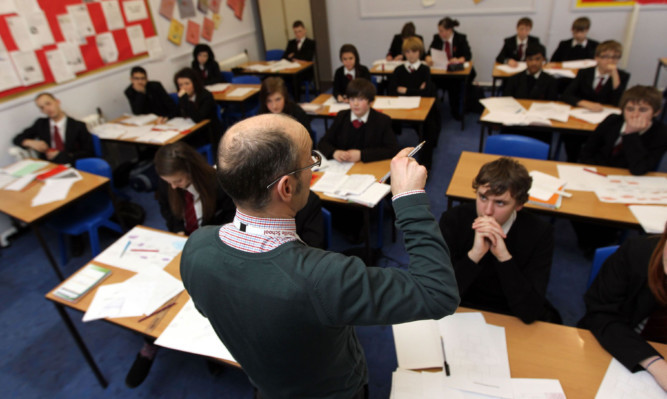Teachers are working an average of more than 11 hours above their contractual 35-hour week, a survey has found.
The survey by the Educational Institute of Scotland (EIS) asked more than 3,500 primary and secondary teachers to record their working hours over a two-week period.
It found that the average teacher works 46.5 hours per week – an extra 33% on top of their contractual commitment.
The teaching union described the situation as “unsustainable” and called on the Scottish Government and local authorities to act.
In the primary sector, the average teacher spent 9.3 hours on preparation and correction, where the contractual position for a full-time teacher sets aside 7.5 hours.
In addition, planning took, on average, 3.4 hours per week for primary teachers, assessment took 1.3 hours and reporting consumed 2.3 hours of a teachers’ time.
In secondary schools, teachers spent 8.5 hours on preparation & correction, 2.5 hours planning, 2.7 hours on assessment and 1.5 hours on curricular development.
EIS general secretary Larry Flanagan said: “It is clear that the current situation is unsustainable and that urgent steps must be taken by the Scottish Government, local authorities and national education bodies to reduce the crippling workload burden that is being placed on Scotland’s teachers.
“The workload picture is similar for teachers in all sectors and at all grades, and for teachers on full-time contracts or part-time contracts.
“No matter what the individual contractual commitment, the evidence gathered during the fortnight focus demonstrates that high levels of additional working are the norm for Scotland’s teachers.”
A Scottish Government spokesman said: “The Scottish Government is working with teachers’ representatives, local authorities and other partners to address concerns around workload.
“The report by the Working Group on Tackling Bureaucracy (set up by the Government) identified specific areas where changes need to be made and how we can make sure teachers have the freedom they need to carry on delivering our world-class curriculum.
“We are committed to making sure councils have the right number and highest quality of teachers in our schools which is why we have offered councils £51 million, including an additional £10 million over and above last year’s settlements to support teacher numbers.”
